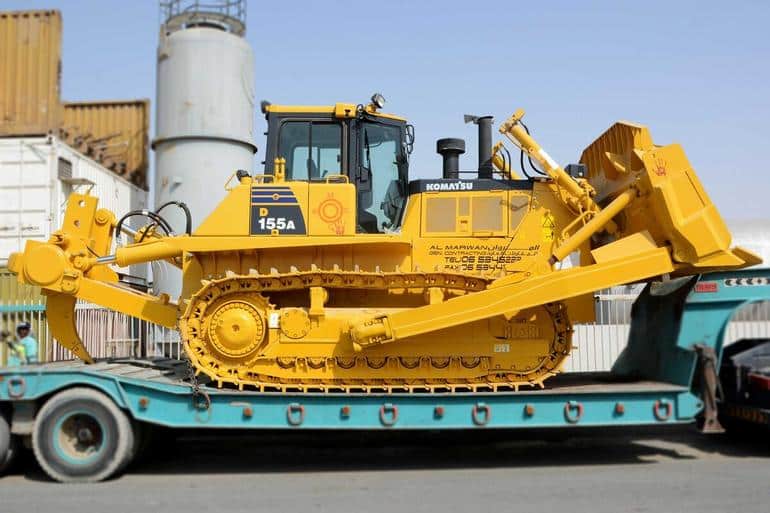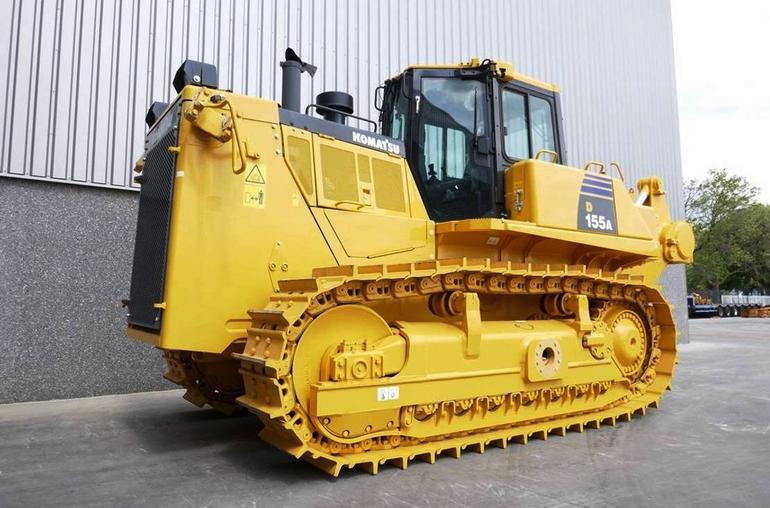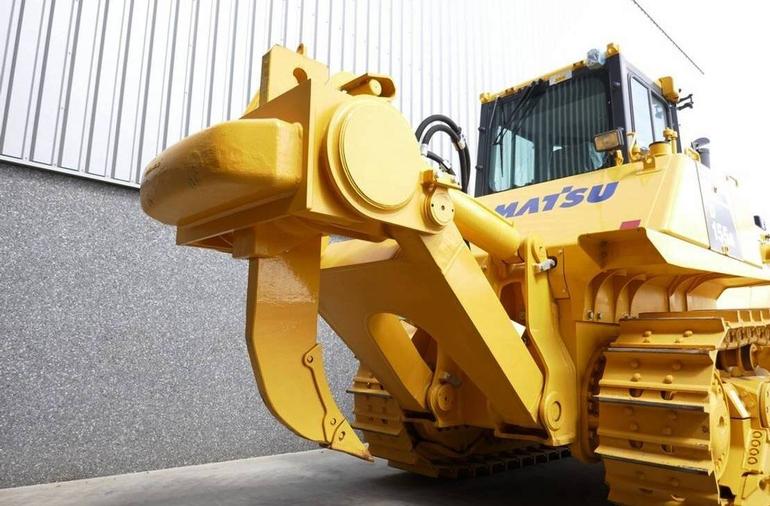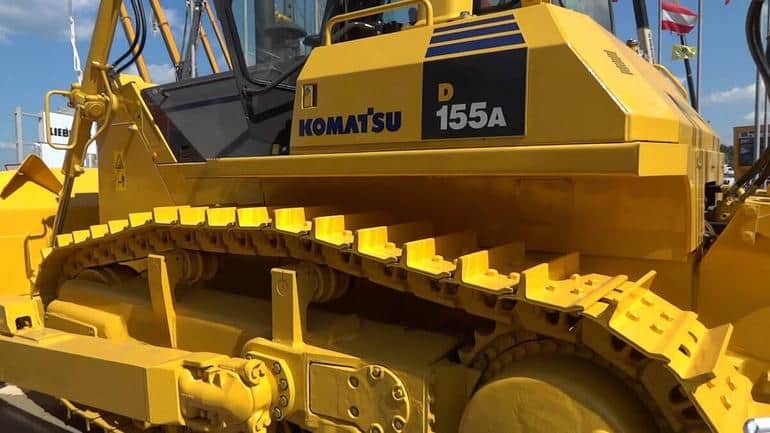I would like to tell you about a modern productive Japanese bulldozer “Komatsu” model D155A of the fifth generation. Special equipment of this company has earned popularity with its reliability, performance and build quality. In the design of the machine they use units of their own design, which allows to guarantee the durability of the machine as a whole.

For this purpose, a wide blade is installed in the front of the machine, which cuts the top layer of earth and then moves it along the road. This type of work is in demand in construction or mining applications. Komatsu D 155 is used in the construction of dams, dams, the formation of future roadbeds, embankments, mining. Consequently, this machine can be found in the fleet of special equipment of companies that are engaged in road and repair and construction work, as well as the laying of canals, excavation of natural resources from the earth's bowels.
Komatsu's productive 155 series bulldozer can operate for long periods of time without failures. Developers have achieved this by introducing precisely calculated units of its own design and using materials with increased wear resistance. The Komatsu D 155 performs tasks where downtime due to failure is impossible.
The bulldozer is powered by an engine produced in-house. It is a liquid-cooled inline six-cylinder diesel engine. To generate more torque and reduce fuel consumption, the engine is equipped with a turbine with an intermediate heat exchanger, which cools the blown air. The engine is unpretentious and reliable, and is designed to operate under continuous heavy load.
Engine description:
The engine is designed with a preheater to make it easier to start a cold engine.

The gears are hydraulically shifted and the gears are forcibly lubricated, which increases durability and improves heat dissipation from the contact areas. The gearbox provides 3 forward and reverse gears each. The undercarriage of the machine is also well thought out. The peculiarity of the design is the cross-shaped carriages with rubber dampers, on which the support rollers are fixed. The latter are connected in pairs, which ensures their oscillation when hitting obstacles. Dampers dampen vibration and reduce shock loads acting on the undercarriage components. The bulldozer's suspension is of the swing type, with a balance beam and swing axles fixed in the front part. The chassis frame is made of high-strength steel, which excludes its deformation under the action of critical loads. Track joints are lubricated with dust seals preventing dust and abrasive materials from entering the friction units. The track consists of 41 shoes 56 cm wide (basic equipment). Track tension is adjusted with a syringe to fill the units with grease. The machine is maneuvered with the help of multi-disc onboard frictions. They disengage and brake one of the tracks. Activation of the frictions is hydraulic, the pressure of the working fluid is taken from the hydraulic system. The oil flow direction is performed by a servo drive combined with a joystick installed in the cab.
Japanese machine builders try to make machinery as compact as possible. In my opinion, the bulldozer is made in this tradition: with very modest dimensions (for this class of machinery), the machine has turned out to be energy-rich and robust. The lifting height of the ripper's cutting edge above ground level is 925 mm and the burial height is 870 mm.

The bulldozer's cabin is comfortable. The engine vibration is practically not felt inside, and the sound pressure is reduced to an acceptable level. This is due to the use of hydraulic shock absorbers and reinforced noise insulation. In addition, dust does not penetrate into the cabin: the cabin maintains excessive air pressure, which does not allow the smallest particles to get inside. All controls are designed organically. The operator does not have to reach far or make significant effort to operate the machine. Motion control is located under the left hand. There is a joystick, which sets the direction of movement and allows maneuvering. Under the right hand of the operator there is a blade control knob. Joystick gives the command to raise or lower the blade, as well as change the angle of inclination. On request, the cab can be equipped with a canopy that protects the operator in case of machine tipping over. This complies with the standards for the Rollover Protection Structure (ROPS) and Falling Object Shelter (FOPS). The canopy adds an additional 500 kg to the weight of the machine.
Developers have tried to minimize routine maintenance. Thus, disc brakes (service and parking brakes) do not require maintenance or adjustment. This is a self-centering design installed in an oil bath. A number of other solutions also simplify the maintenance of special equipment: the presence of hermetic seals in the most loaded units prevents abrasive wear of rubbing surfaces.

The Komatsu 155 series lineup consists of several units:
All modifications are composed according to a similar scheme, but may slightly differ in equipment, operating parameters, dimensions.
It will not be possible to buy a new car even in the basic configuration at a low price. According to various estimates, you will have to pay about 17.5 million rubles for it. Most likely, the amount will be increased due to the commission of the intermediary, the distance of delivery or changes in the exchange rate. An apparatus with mileage, but in normal condition, costs 8 million rubles. You can find a cheaper one, but in this case the machine is likely to require costly repairs, which will level the saved amount. Among bulldozers of this class there are many similar machines with similar performance characteristics. Here are a few: Shantui SD32, Zoomlion ZD320-3, Caterpillar D8R, John Deere 1050J.
Komatsu D 155A is a famous Japanese bulldozer from the Advance series: an organic combination of traction power, durability, comfort. It is not without reason that the brand is considered a leader among companies producing construction special equipment, whose products are characterized by a long service life and productivity.